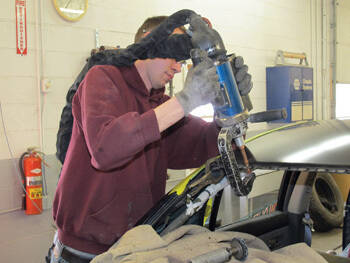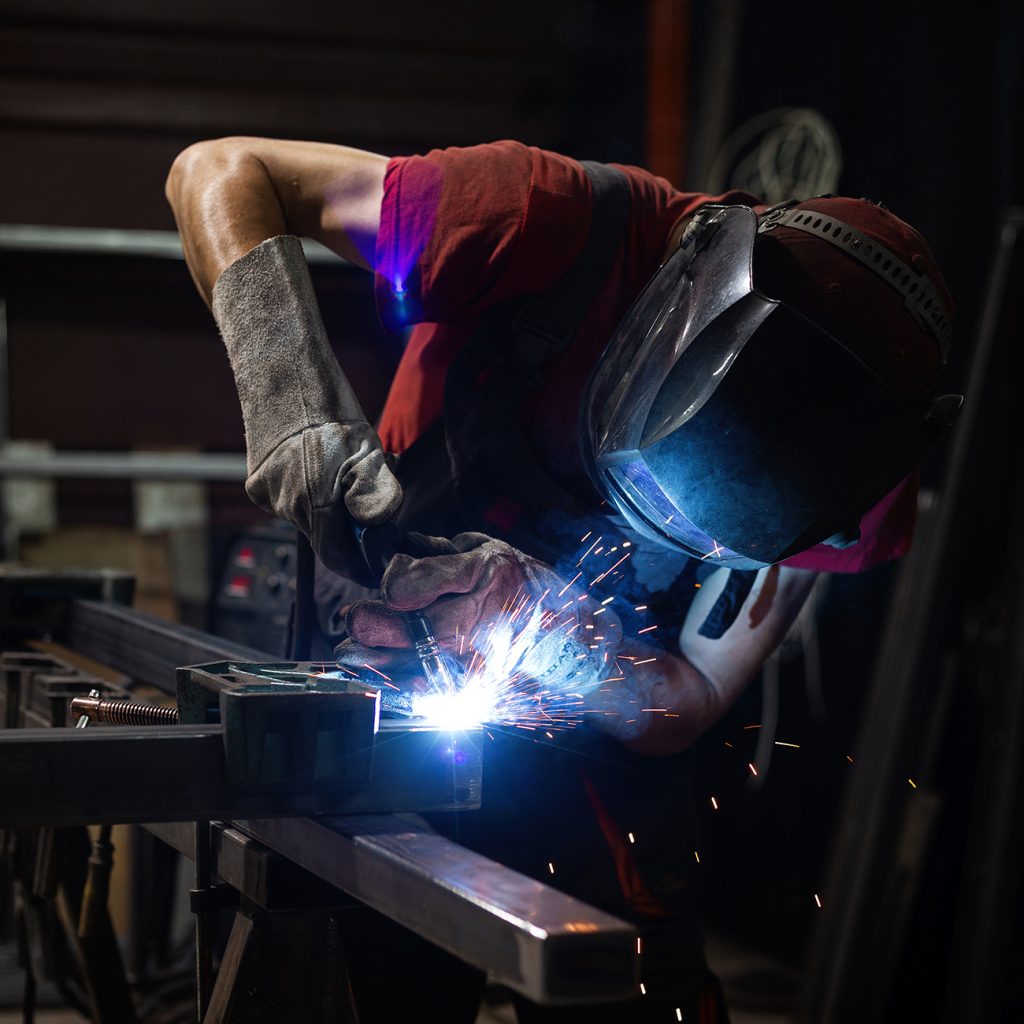Everything about Welding: Key Insights Into Techniques and Best Practices for Success
Welding encompasses a range of methods, each suited for certain materials and applications. Understanding these techniques, such as GMAW, SMAW, and TIG, is vital for attaining ideal outcomes. Furthermore, the best equipment and security methods can not be forgotten. As preparation and troubleshooting play critical roles in the welding procedure, mastering these components can greatly enhance the quality of the end product. What are the key aspects that assure a successful weld?
Understanding Different Welding Methods
Welding strategies encompass a variety of methods, each matched to particular applications and materials. Amongst one of the most typical methods are Gas Steel Arc Welding (GMAW), Secured Metal Arc Welding (SMAW), and Tungsten Inert Gas Welding (TIG) GMAW, also recognized as MIG welding, is popular for its rate and versatility, making it excellent for thin materials. SMAW, or stick welding, is preferred for its simpleness and effectiveness in outside settings, especially with thicker steels. TIG welding offers precision and control, making it ideal for intricate work and non-ferrous steels (Montana Mobile Welding and Repair Belgrade Welding). Each method has its distinct advantages and factors to consider, enabling welders to pick the most effective method based upon the job's requirements, material kind, and wanted results. Recognizing these techniques is important for successful welding
Necessary Welding Equipment and Devices
While different welding methods require certain abilities, the best devices and tools are similarly crucial for accomplishing high quality outcomes. Essential welding tools consists of welding machines, which differ depending on the technique-- such as MIG, TIG, or stick welding. Protective gear, consisting of safety helmets, handwear covers, and aprons, guarantees safety and security and comfort during the procedure. Additionally, clamps and fixtures aid secure materials in position, making certain accuracy in welds. Consumables like welding poles, cable, and securing gas are also crucial parts that affect the quality of the weld. Additionally, tools such as cutters and mills promote surface preparation and post-weld ending up, adding to a professional result. Purchasing high-grade equipment ultimately enhances the effectiveness and effectiveness of welding jobs.
Safety And Security Practices in Welding
Proper safety methods are essential in the welding sector to shield workers from prospective threats. Welders have to wear suitable personal protective devices (PPE), including safety helmets with appropriate shading, gloves, and flame-resistant clothes. Adequate air flow is essential to decrease direct exposure to damaging fumes and gases created during the welding procedure. Furthermore, workers should be learnt the appropriate handling of welding devices to stop crashes. Fire safety measures, such as keeping combustible products away from the welding location and having fire extinguishers readily offered, are required. Routine evaluations of tools and offices can aid determine potential dangers prior to they result in crashes. By sticking to these safety techniques, welders can develop a much safer working atmosphere and reduce risks linked with their profession.
Preparing Products for Welding
Preparing materials for welding is an important action that significantly influences the high quality and honesty of the final item (Belgrade Welding). Proper prep work involves cleaning up the surface areas to get rid of contaminants such as oil, dirt, and corrosion, which can jeopardize the weld. Methods such as grinding, fining sand, or making use of solvents are typically used to attain a clean surface. In addition, guaranteeing that the materials mesh well is necessary; voids can lead to weak welds. It's also essential to think about the alignment and positioning of the parts, as click this this will influence the convenience of welding and the last outcome. Lastly, picking the suitable filler material and guaranteeing compatibility with the base steels is important for achieving solid, long lasting welds
Tips for Getting High-Quality Welds
Achieving high-grade welds needs attention to information and adherence to finest techniques throughout the welding process. Proper joint preparation is vital, guaranteeing surfaces are clean and free from impurities. Selecting the ideal filler product and welding method based upon the base metals is critical for suitable bonding. Keeping consistent travel rate and angle while welding can advertise and stop issues harmony. Additionally, managing warmth input is vital; extreme warm can bring about bending and deteriorated joints. If essential, consistently inspecting the welds during the procedure enables for prompt changes. Using suitable post-weld treatments, such as cleaning and stress and anxiety alleviation, can improve the toughness and stability of the weld, eventually making sure an effective outcome.
Troubleshooting Usual Welding Issues
Welding frequently presents challenges that can affect the top quality and stability of the final product. Common issues such as porosity, irregular weld grains, and getting too hot can occur, each requiring specific fixing strategies. Understanding these troubles is essential for welders to enhance their skills and attain ideal results.
Porosity Problems Clarified
Although porosity can usually be forgotten, it continues to be an essential concern in welding that can jeopardize the honesty of a finished product. Porosity refers to the presence of small gas pockets within the weld bead, which can lead and compromise the joint to early failure. This trouble typically arises from contaminants, wetness, or inappropriate shielding gas coverage throughout the welding procedure. To reduce porosity, welders should validate that the base materials are completely dry and tidy, make use of suitable protecting gases, and maintain consistent welding specifications. Frequently inspecting the devices and setting can also assist determine possible concerns before they manifest in the weld. Dealing with porosity successfully is essential for achieving strong, long lasting welds that meet top quality standards.

Inconsistent Weld Beans
Inconsistent weld grains can greatly impact the top quality and toughness of a finished product. Different aspects add to this problem, including incorrect traveling speed, inaccurate amperage setups, and inconsistent electrode angles. When the welder relocates too promptly, a bead might appear slim and lack penetration, while moving too gradually can create extreme accumulation. Additionally, making use of the incorrect amperage can result in either undercutting or too much spatter, both of which concession weld integrity. The welder's technique, such as inconsistent torch motion, can additionally lead to unequal grain look. To alleviate these problems, welders ought to concentrate on preserving constant, controlled motions and ensuring appropriate equipment setups to achieve uniformity in their welds. Uniformity is key to accomplishing solid and reputable welds.
Getting Too Hot and Warping Issues
Too much warmth during the welding procedure can lead to substantial overheating and buckling issues, impacting the architectural integrity of the workpiece. These issues often show up as distortion, which can endanger alignment and fit-up, making more setting up challenging. Elements contributing to overheating include the option of welding specifications, such as voltage and travel speed, along with the kind of product being welded. To reduce these problems, welders need to keep regular travel speed and proper warm input while monitoring the workpiece temperature. In addition, pre-heating or spot welder post-weld heat therapy can assist ease anxieties brought on by rapid cooling - Montana Mobile Welding and Repair Belgrade Fabrication. Regular inspection and adherence to finest practices are necessary in protecting against overheating and making certain the durability and reliability of bonded frameworks
Regularly Asked Inquiries
What Are the Occupation Opportunities in the Welding Market?
The welding market supplies varied occupation opportunities, consisting of positions as welders, examiners, designers, and educators. Experts can operate in manufacturing, building and construction, aerospace, and automotive industries, gaining from strong need and affordable incomes in numerous duties.
Exactly How Can I Improve My Welding Rate Without Giving Up High Quality?
To boost welding speed without sacrificing top quality, one need to exercise reliable strategies, keep devices, optimize setups, and improve hand-eye coordination. Routine training and seeking comments can also substantially add to achieving quicker, top quality welds.
What Qualifications Are Readily Available for Welders?
Countless certifications exist for welders, including those from the American Welding Society (AWS), the National Facility for Building And Construction Education and Research Study (NCCER), and numerous industry-specific organizations. These qualifications boost employability and show ability effectiveness.
Just How Does Welding Affect the Properties of Metals?
Welding influences the buildings of steels by changing their microstructure, which can bring about modifications in solidity, ductility, and toughness. Warm input and cooling prices during the process significantly impact these material characteristics.
Can I Weld Dissimilar Metals Together?
